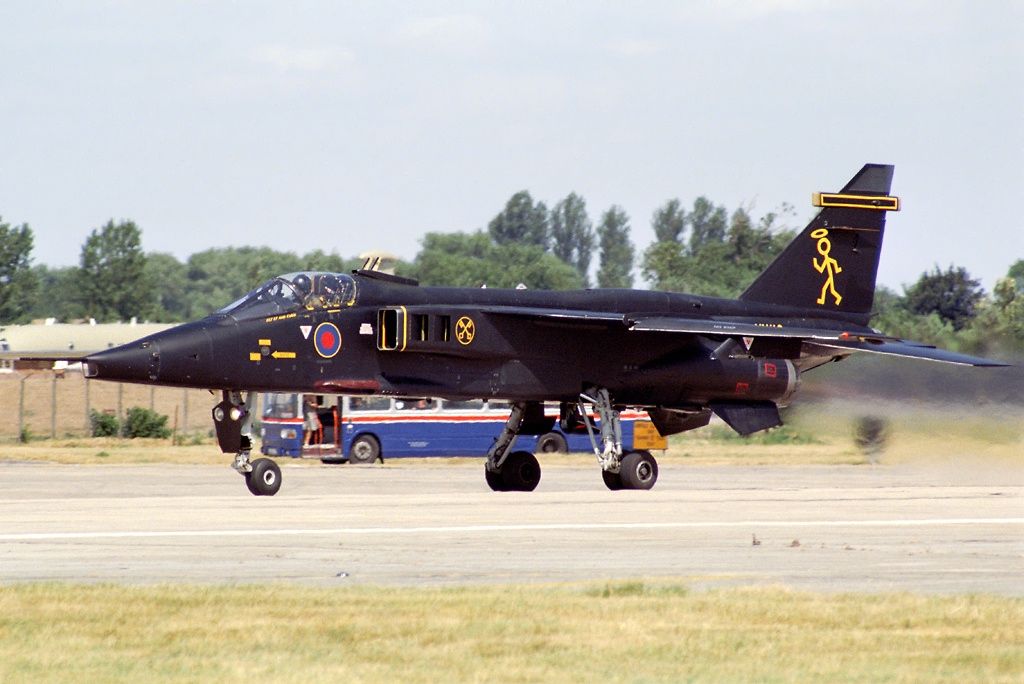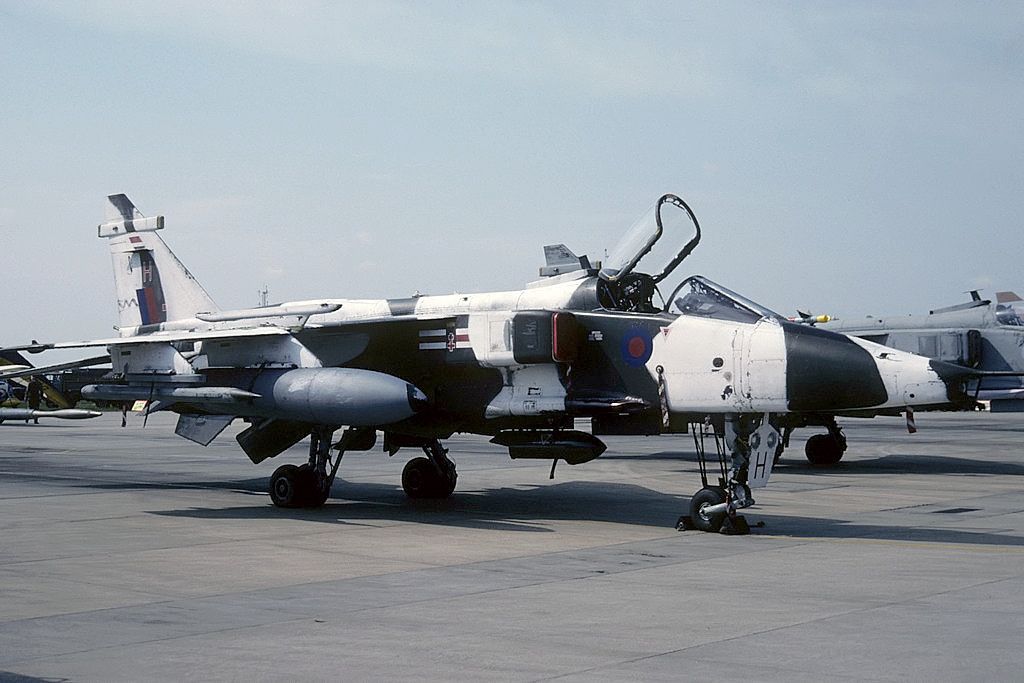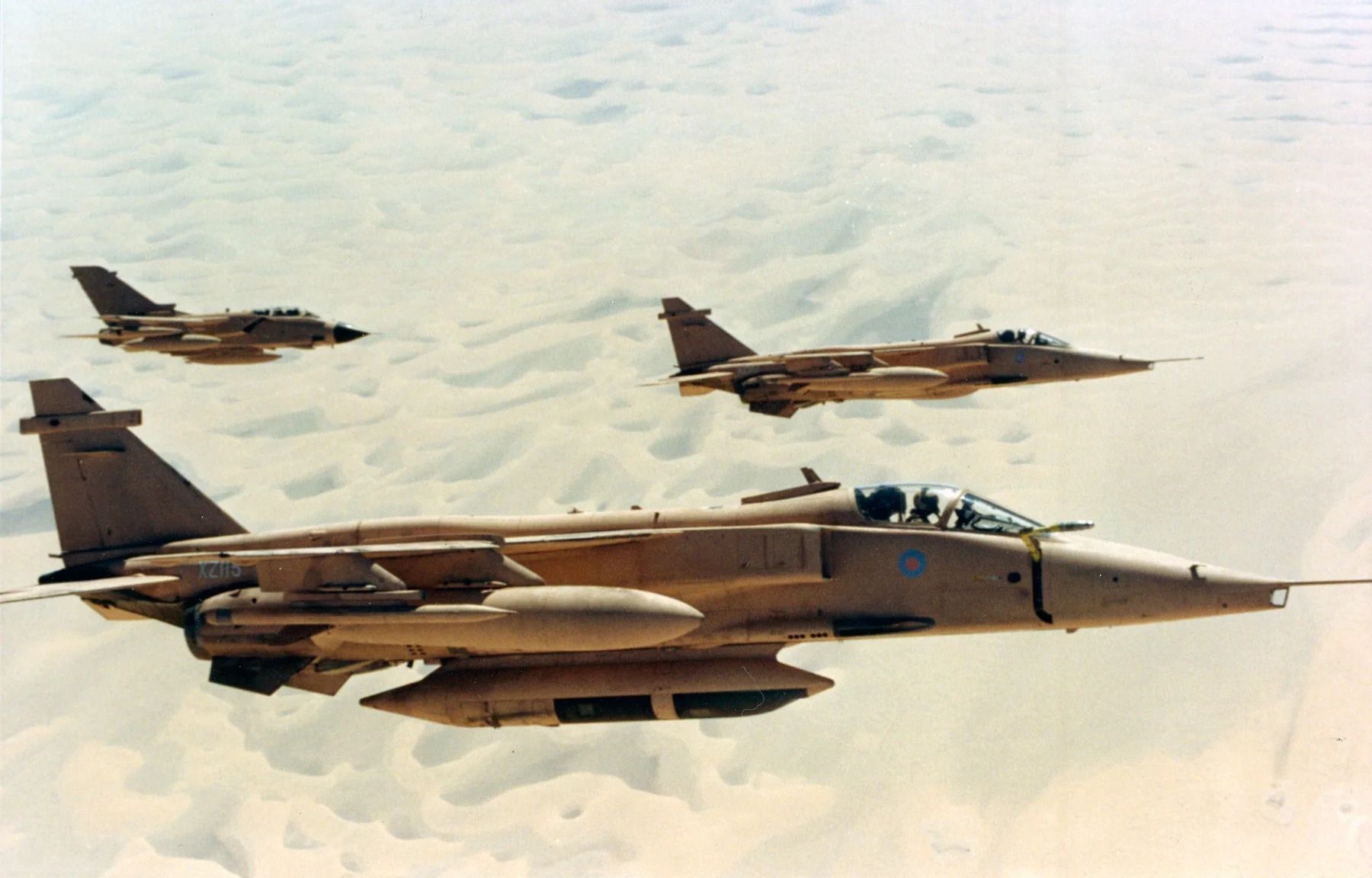The Jaguar was a joint design between the French and British that saw action in several conflicts
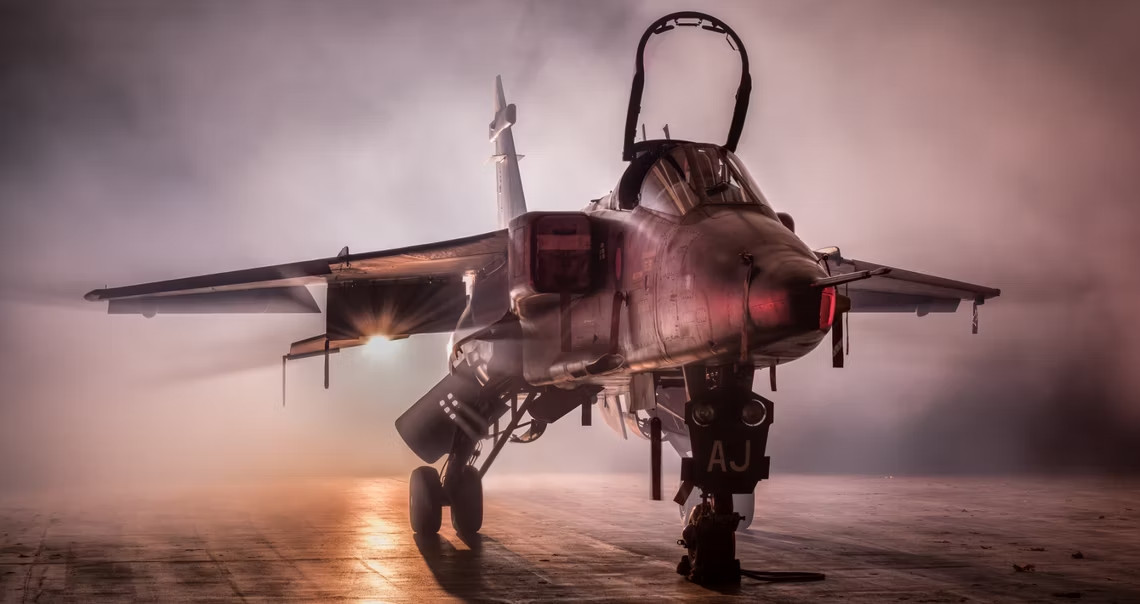
The cooperation between Britain and France in the aviation world is perhaps remembered best for one thing, the Concorde. Concorde became a symbol of national pride for both countries during its design, construction and service life. It remained in service for nearly 30 years and became the most recognizable airliner in the world. But while Concorde was very recognizable, Britain and France also collaborated on another jet aircraft. Not an airliner, but a military attack aircraft.
This was the Sepecat Jaguar. The Jaguar was an aircraft that, amazingly, was designed originally as a jet trainer in the 1960s with a light ground attack capability. That very quickly changed as it became clear both air arms needed a supersonic strike aircraft that could deliver a nuclear payload. Ironically, this led to some to call the Jaguar – a mini TSR2, the British aircraft controversially canceled in the 1960s. But the Jaguar would go on to serve with the French and British until 2005 and 2007 respectively, while also serving in Oman until 2014. The aircraft is still in service today with the Indian Air Force.
HOTCARS VIDEO OF THE DAYClose Background And Development Of The Jaguar
Background And Development Of The Jaguar
The Jaguar program began in the early 1960s, as Britain looked to replace the Folland Gnat T1 and Hawker Hunter T7 training aircraft. The French at the time were also looking to replace their Fouga Magister, Lockheed T-33 and Dassault Mystere IV aircraft too. A Memorandum of Understanding (MoU) was signed in May 1965 between the two countries, and the SEPECAT company was formed as a joint venture between Breguet and the British Aircraft Corporation. The two companies would produce various components for the new aircraft, which was developed as a strike aircraft in 1970 after TSR2s cancellation and the failure of Britain to buy the F-111 Aardvark.
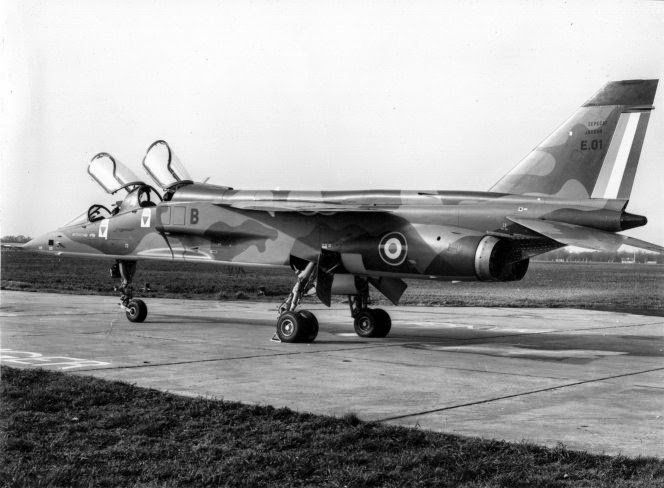
The Jaguar would go on to be the chosen replacement for Britain’s McDonnell Douglas Phantom FGR2s, while the French selected the Jaguar as its replacement for the Aeronavale Dassault Etendard IV. Eight prototypes were built and the Jaguar first took flight on September 8th 1968. Like aircraft such as the Swedish Viggen, the Jaguar was designed to take off from shorter landing strips, such as in clearing or on roads. The aircraft entered service in 1973 for the French and in 1974 for the United Kingdom.
RELATED:The Avro Vulcan Was The Ultimate Cold War Bomber
Design And Service Life Of The Jaguar
The Jaguar is quite a small strike aircraft, with a relatively conventional design. It has a small swept wing, twin-engine monoplane design, and it is powered by two Rolls-Royce Turbomeca Adour turbofan engines. This engine was developed primarily for the Jaguar, and in joint partnership with Rolls-Royce and Turbomeca. The Jaguar was also built with ease of maintenance in mind, with engine change possible in a remarkable 30 minutes. The Adour engine would be used in other aircraft too, most notably the BAE Hawk trainer in the non-afterburning form. The Hawk was, ironically, the aircraft that fulfilled the Jaguar’s original training purpose.
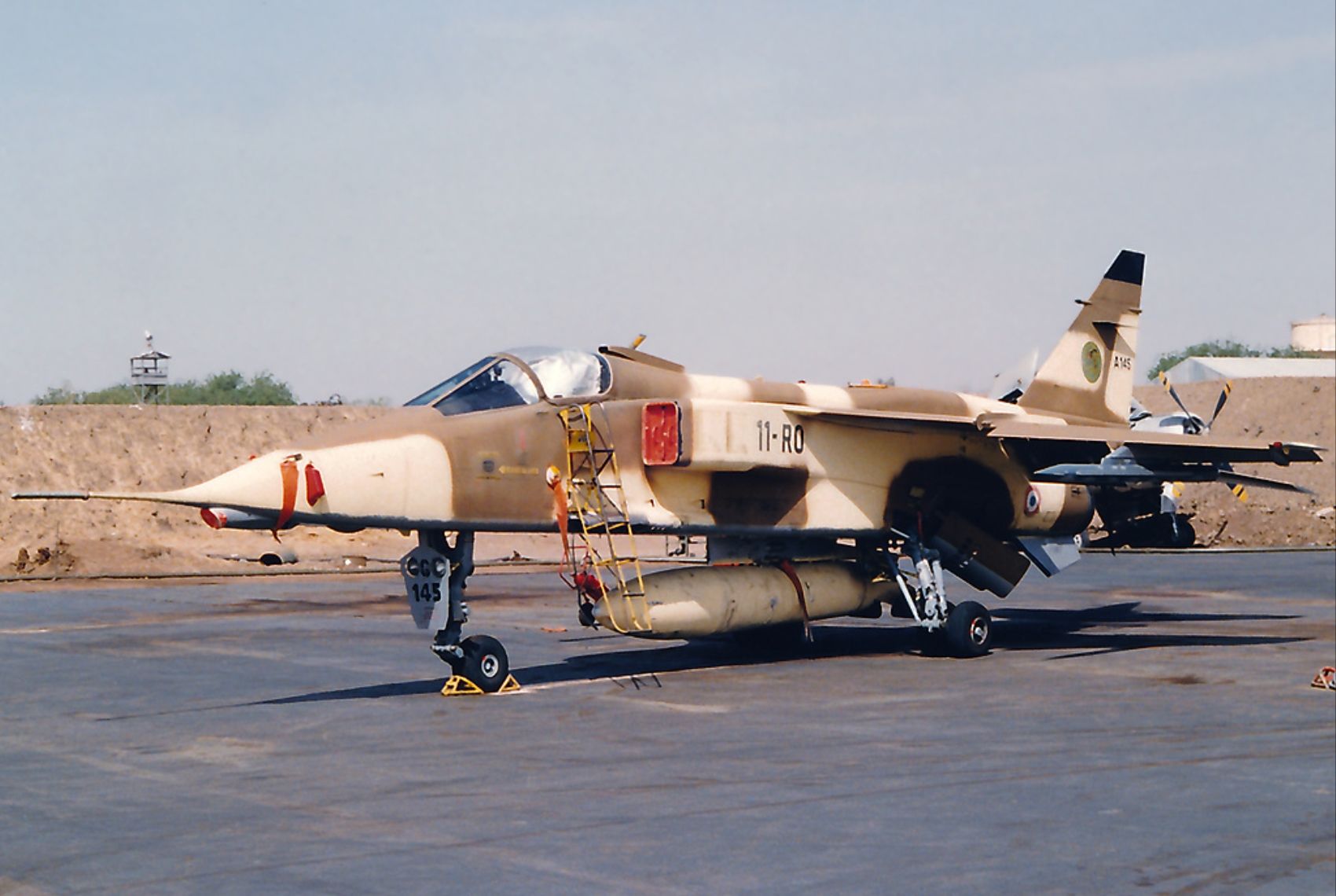
In service, the French and British would use the Jaguar to great effect in combat operations. It was frequently deployed in defense of French national interests in Africa, and the Jaguar’s combat debut was against Polisario Front forces in Mauritania in December 1977. The Jaguar also saw extensive use in the conflict in Chad, notably during Operation Tacaud. When Libyan forces were supposed to withdraw from Chad in the mid-1980s, they chose to ignore that agreement and thus the Jaguar was deployed in 1986 to Chad as part of Operation Epervier.
The Jaguar In British Service
It is perhaps with the British that the Jaguar gained the most fame. Its first use with the British was during the Persian Gulf War, as part of the Gulf War coalition. RAF Jaguars and Tornados would strike against Silkworm missile batteries in Kuwait, and would take part in Operation Granby. The aircraft were based out of airbases in Oman and Bahrain. The Jaguar also worked in conjunction with Blackburn Buccaneers, and the Jaguars gained new weapons during the war, such as the CRV7 high-velocity rockets. The Gulf War would be the Jaguar’s most prominent military action in British hands.
RELATED:Saabs Draken Was Sweden’s Ultimate Fighter Aircraft
The Jaguar’s Final Upgrades And Retirement
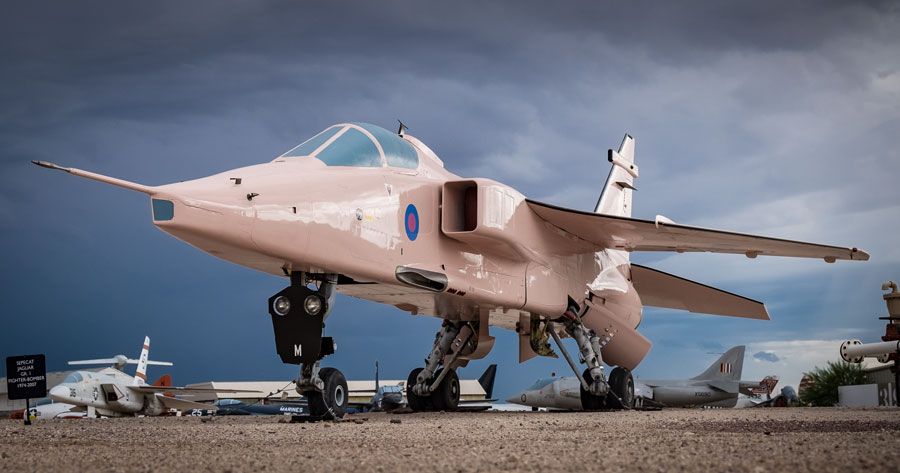
via Pima Air and Space Museum
The Jaguar would go through various upgrades during its service life, but all too soon the service of the Jaguar would come to an end. The French would retire their aircraft in 2004 while the RAF kept flying the Jaguar until April 2007. The final British Jaguar flight would take place on December 20th 2007, when a Jaguar operated by Qinetiq took to the skies. Remarkably, a vast number remain as part of the RAF at the Cosford air base, where, kept undercover and in virtually complete condition, they are used as ground instructional airframes. And a few are in museums across Britain and France, and in other countries too. They are today standing proud and reminding us what a capable aircraft the Jaguar was.
Sources: BAE Systems, Pima Air and Space Museum, Key Aero, Medium



